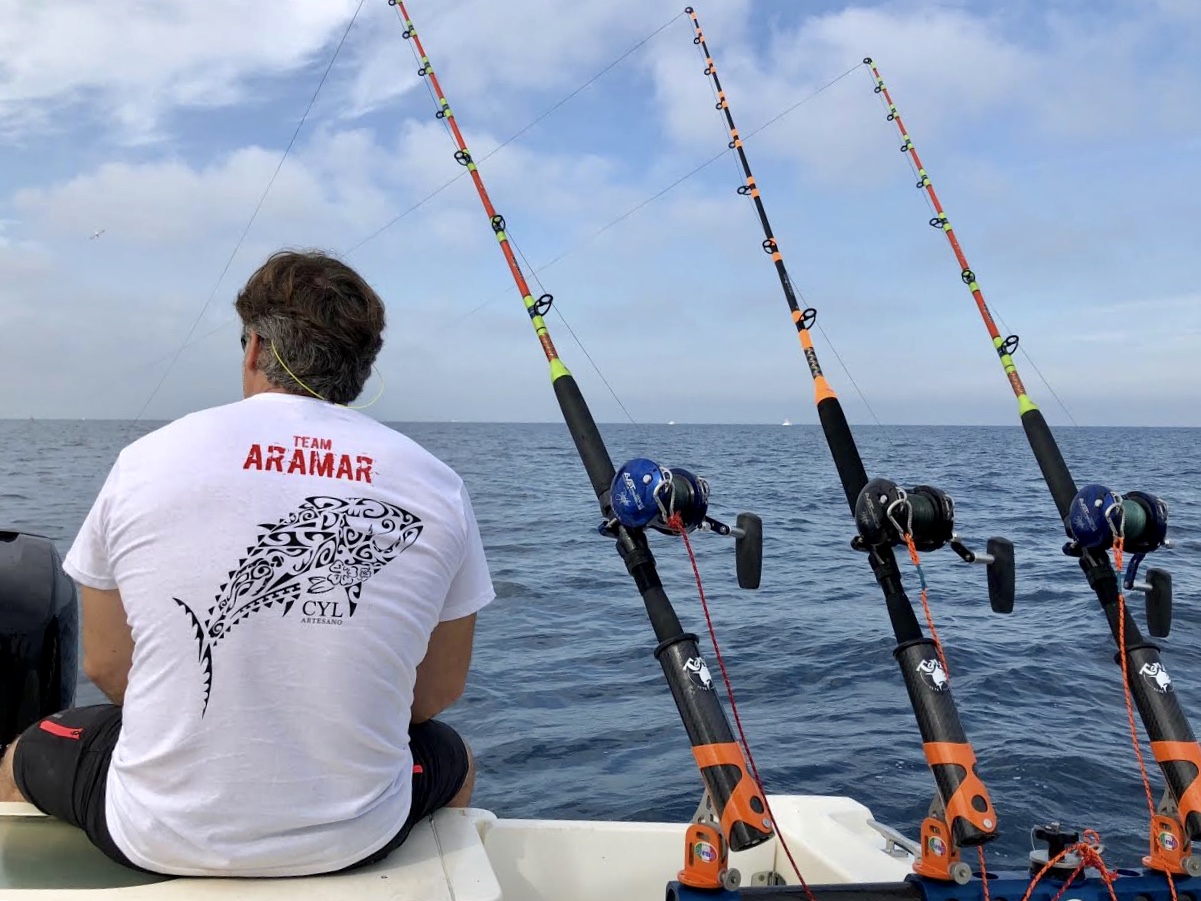CHOOSING THE MULTIFIBER FILAMENT |
| By Andrés Orts |
|
| Choosing a line model is becoming more difficult every day because of the wide range available on the market. We are referring to the multi-fibre fishing lines, the heirs of the first lines made of Kevlar and Dacron, made of polyethylene. The result is a very resistant product with, at the same time, a very fine diameter. |
|
|
.jpg) |
| |
The first thing we need to know is when to change from monofilament to multifilament - from nylon to fibre. At the same diameter, monofilament is much less resistant than braiding. Depending on the type of fishing we fishermen prefer the multifilament due to the lack of elasticity in these lines, which gives them extreme sensitivity. It also transmits all the energy of the rod's movement to the lure and are abrasion resistant. Also, more meters of multifiber fit on the same reel than monofilament, as the former is thinner.
The most common, in terms of the number of strands, are usually braids of four strands in we can find them in firms such as PowerPro, Spiderwire and Fireline and of eight strands in Avani, Varivas, Daiwa, etc... Finally, a special form of braiding has been developed, called the 12-strand precision braiding. This process consists of braiding the polyethylene fibres more slowly, but with more tension. The result is a much rounder and more uniform thread with a much higher resistance than other braided lines on the market. To evaluate the change and improvement of these lines you only have to look at their diameter/resistance ratio. For example, in the case of the Daiwa Saltiga x12 the smallest diameter of 16/100 (0.16) has a resistance of 30 lbs or 14 kilos. Half as in the case of monofilament. Some multifibers have different types of coatings to make them more compact and increase their hardness. With the passage of time, when the line is worn, part of the original coating is lost. This fact, far from damaging the line causes an improvement when released. |
| |
|
| Some multi-fiber lines have different types of coatings to make them more compact and increase their hardness.
|
|
|
| |
Despite their resistance to abrasion, the rocky bottoms are the main enemy of these lines as they are cut immediately, long before the monofilament. This is why the terminal or leader should always be made of nylon or fluorocarbon. These lines are manufactured in one color or in several colors per coil, the fact of coloring the line every 5 or 10 meters is to add one more functionality to the line, because it allows us to count effectively the distance to which our lure is, by controlling what color is before us. It is very practical in disciplines such as trolling or jigging.
Another fundamental advantage of these lines is their ease of exit before a spinning cast, since much larger casts are achieved. The line, being softer and thinner, leaves the reel much faster, and exactly the same thing happens with jigging fishing. The jig goes down infinitely faster with a thin line of polyethylene braiding than with a traditional nylon line.
|
|
.jpg) |
| |
|
| The fact of coloring the line every 5 or 10 meters is to add one more functionality to the line, as it allows us to count the distance at which our lure is by controlling what color is in front of us.
|
|
|
| |
SOLUTIONS:
- To prevent the multi-fibre from being tacked on to the rest of the braid that remains wound on the reel when the line is pulled tightly or a strong bite is made into a fish bait, we will load the reel with a lot of tension from the beginning.
- In the case of formation of "wigs", especially when the line is not wound tight enough, or the reel is too loaded with line and a tense cast is made, we will load the reel very tense without filling it too much.
- Some fish get off the hook when they are close to the boat because of the lack of elasticity, because this line causes a tear in the mouth of the fish. The solution is to use soft rods to cushion the onslaught and, as many fishermen know, it is also essential to loosen the brake when the fish is close to the boat. Possibly the fish will make strong head-strikes when seen near the boat and non-elasticity could be a problem.
- Multifibers are very visible in the water, especially when the water is clear. This should not worry us, because the fish only see the last fathoms near the lure and these should always be transparent, nylon, fluorocarbon or mixed.
- These lines being so resistant could end up cutting the rings of a rod by rubbing, so it is advisable to use high quality equipment with ceramic rings resistant to temperatures of 1200 º C.
- When we have a big bite, an explosive exit of line of the reel is produced, either with nylon or with these lines. It is dangerous to touch the reel, and to touch the coil to stop it with your fingers because it literally burns. These lines are capable of cutting the fingers of the hand.
|
| |
.jpg) |
| |
.jpg) |
| |
.jpg) |
| |
.jpg) |
| |
 |
| |
.jpg) |
| |
.jpg) |
| |
 |
| |

.jpg)
.jpg)
.jpg)
.jpg)
.jpg)
.jpg)

.jpg)
.jpg)
